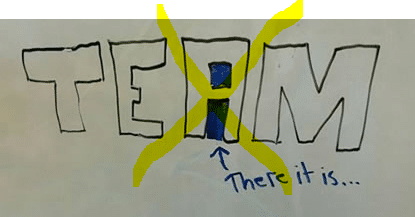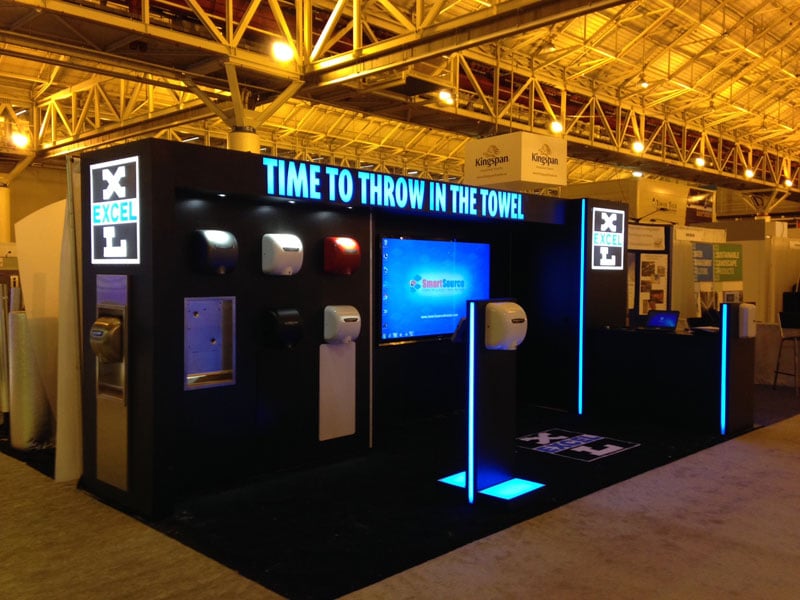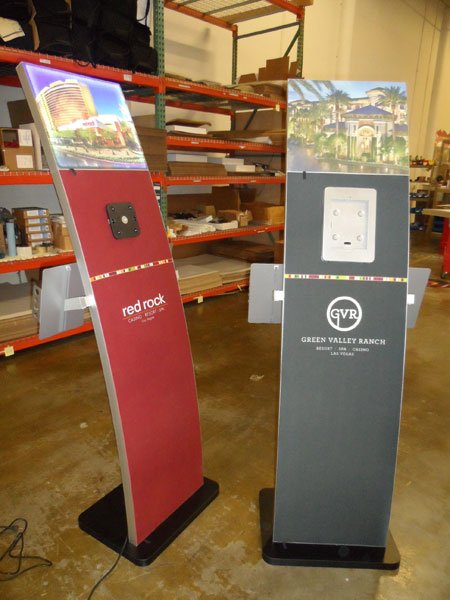How To Build A Better Trade Show Team
Whether you staff your company’s show booth alone or you exhibit at a trade show with an army of hired professionals, you increase your chances of making each trade show you invest in a successful marketing event by making your trade show team better at what they do.
In the past, we’ve written about the value of bringing in a professional trainer to teach your salespeople about the unique environment of the show floor. But this time, we want to show you what you can do, on your own, to shape your staffers into a well-oiled machine who can deal effectively with prospects in your exhibit.
1) Plan Ahead
It’s important to have a meeting with those who’ll be manning the booth – at least a couple of weeks, if not months – before the show is starting, to go over your goals for that particular show.
You’re taking people who may not be sales professionals into an environment where selling is the most important thing they can do.
Without knowing what the goals are ahead of time, it’ll be like herding cats to get them to act as a unified team, which they need to be in order to succeed.
If your trade show team doesn't have a plan, guiding them will be like herding kittens! Click To TweetIf you’re bringing others to the show, you may have a mix of sales, engineering, service and marketing people in a trade show booth where none of them know what’s expected of them. They may all be experts in their own fields, but if they’re new to trade show marketing, they need a clear understanding of what’s expected. It’s up to you to make this motley crew a team and train your booth staff.
(There is an “i” in team – get rid of it!)
…one where all the players have the necessary skills, understand the goals and know that, to win in the sales game, they have to work toward a common objective.
They may be confused and indifferent before the show starts, but when they get onto the field (your exhibit), they need to act like winners. This requires a thorough understanding of why each person is there, which means you need a game plan.
Here’s how it works:
2) Answer The Most Important Questions First
It may seem like the most obvious of questions, but without being steered in the same direction, each member of your team may have a different idea of what to do with their time in your exhibit booth space. The most important questions to answer are the same ones every journalist knows by heart: Who, What, Where, When and Why?
- Each member of the team first needs to make a firm commitment to being able to attend the show and all the events that surround it (planning meetings, goal setting sessions, travel to and from the show, post-show evaluations, etc.). They need to know where they’re going and how much of a time commitment is expected of them. That takes care of the “Who,” “When” and “Where” questions.
- The “What” question is simply “What’s in it for me?” This may be an obvious question to you and other sales-oriented people on the team, but it must be explicitly answered.
One way to answer this is to break down the value of shows by demonstrating how many prospects they’ll come in contact with at this particular show. Then, for comparison, show them how this stacks up to cold calling.
For example, assume you’ll reach 500 to 1,000 prospects at the upcoming show. With two or three people working the booth, that’s approximately 250 to 500 leads per person.
Starting out, let’s also assume that an average salesperson can make five sales calls a day. So the prospects at this one show represent more than fifty days of cold calling!
To take this a step further, every five attendees a disinterested staffer lets walk by the exhibit without prospecting represents an entire day of calls back in the office. To paint an even clearer picture, the company will have to spend additional marketing dollars after the show to reach those potential clients some other way.
The ideal situation would be to share hard data from previous shows, to demonstrate the value of each precious hour of time spent on the trade show floor. If you can prove that X number of dollars were generated as a result of last year’s show, you may be able to convince even the most unwilling of “regular” salespeople of the potential impact of the upcoming event, so that they give their best efforts to the time they invest working in your exhibits.
This puts the “Why” question to rest: show floor selling is demonstrably and exponentially more productive than cold calling.
3) Get That “Team Feeling”
Because you’re so involved in your company’s trade show marketing program, chances are you’re pretty gung-ho on its benefits.
But there may be some negative attitudes in the minds of other members of your team, and these need to be resolved. Rather than sweeping these negative feelings under the rug, work to bring them out and deal with them. Nothing is more dangerous than a disengaged staffer.
One way to approach this is to make a list on a flip chart or white board, with two columns: “Like” and “Dislike.”
In the meeting, encourage the members of your team to voice both their good and bad feelings about trade shows.
Your job is to be like Switzerland and remain neutral, rather than disputing every issue they disdain. Let the members of your team have their say, positive or negative.
While simple, it’s an effective tool for changing people’s minds and getting consensus, while clearing up any misunderstandings.
You can bet that the first few comments will be positive: staffers saying what they hope management wants to hear.
There will, however, always be someone (usually from sales) who’ll bring up having to be on their feet all day and missing out on time that could be spent selling in the field.
Once this happens, count on the floodgates opening. This is the interaction you want. It may be slow in the beginning, but it will soon build steam. Again, your job is to be patient and let the process work.
After everything’s out in the open, I can virtually guarantee that the “Like” column will be longer (and the issues more important) than the “Dislike” column. Why? Because trade shows are, when done right, both useful and successful as a sales tool.
When this list is used, the staffers can see—from their own input—that this is true. Your booth workers will have convinced themselves that shows are a good idea, and they’ll have become more committed team players in the process.
We’re not trying to sell you a new trade show exhibit or accessory with each of these articles. Instead, we try to provide you with information we think you’ll find valuable, to help leverage your trade show marketing investments.
In return, we hope that you’ll think of the team at American Image Displays when the time comes for you to investigate a new trade show booth, or to add to the trade show supplies that you’re currently using, with table throws, banner stands, literature racks and other accessories.
There’s lots more to planning to succeed at trade shows – we’ve merely skimmed the surface of one small part of the process in this article – browse our blog for many other tips and techniques! We hope you’ve found the information shared here useful, and if there’s any other way we can help, please get in touch. Subscribe to the blog to get an email when a new article is posted, or call us at (425) 556-9511 or email [email protected] if you’ve got a question we can help with.


